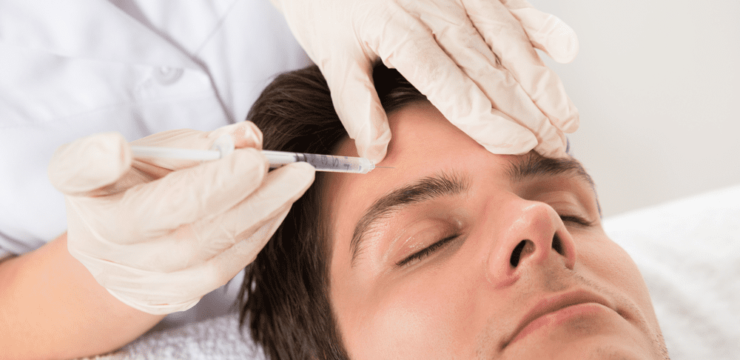Melasma is one of the most common skin conditions present. It’s characterized by skin patches of hyperpigmentation. It’s basically a cosmetic problem with no other systemic or skin effects.
The condition is found predominantly in women. In fact, 90% of those suffering from melasma are females. You might hear the names “chloasma” and “mask of pregnancy,” these are all synonymous with melasma and refer to the same thing.
Sites Affected and Symptoms
As we said, melasma is a skin condition causing dark skin patches. It mainly affects areas exposed to the sun so it makes sense that the face is most commonly affected. Predominantly affected areas on the face are the cheeks, chin, forehead, and bridge of the nose. Patches can also present on the neck and forearms but this isn’t common.
Melasma is purely cosmetic. The patches do not itch, hurt, or cause any form of discomfort. There’s also no increased risk of skin cancer. If you suffer from melasma and aren’t bothered by it, you can neglect it. Treatment is only necessary if it’s making you self conscious about how you look.
Causes of Melasma
Sadly, there’s no definite cause for melasma. There are a bunch of risk factors that we know of that can increase a person’s likelihood of getting it, but no direct cause can be eliminated.
For starters, it seems that people with darker skin tones are more likely to develop chloasma than fair-skinned people. Another important risk factor is exposure to sunlight.
Ultraviolet rays from the sun affect the activity of melanocytes in our skin. Melanocytes are cells present in our skin that produce melanin which is the substance that determines how dark our skin is.
Hormonal changes are thought to produce a massive role in the development of melasma. Estrogen, in particular, is thought to be of particular importance. This helps explain why women suffer from the condition significantly more than men.
Further proof of the importance of the role of hormones is that pregnant women and women on oral contraceptive pills can develop melasma. The fact that the condition is found on the cheeks giving it a mask-like appearance and often develops during pregnancy is why some people refer to it as the “mask of pregnancy.”
Diagnosis
The diagnosis of melasma is straightforward and almost exclusively a clinical one. Any doctor will probably be able to identify melasma upon looking at it, but it’s still best to consult a dermatologist to confirm the diagnosis.
In most cases, no further testing is required and treatment can start straight away. Sometimes, however, your dermatologist might ask for a few more tests to be absolutely certain of the diagnosis.
Wood’s lamp examination is a kind of test that can be performed at your dermatologist’s office. The benefits of examining a patient’s skin using Wood’s lamp are two-fold. First of all, it’ll rule out the presence of a fungal infection which, if present, would show a certain kind of fluorescence when exposed to light from Wood’s lamp. The second benefit is identifying how many skin layers are affected by melasma.
This test is seldom required though. Melasma is too common and too easy of clinical diagnosis to require any form of additional testing. The lack of complications also makes extra tests unnecessary.
Treatment
Conservative measures
Melasma is fairly harmless. If you’re not bothered by it, you can simply let it be and not seek any form of treatment. Nonetheless, if you’re okay with it now, you probably won’t be if it gets worse or darker. Finding ways to keep existing patches steady and constant is important for everyone.
This can be achieved by protecting your face from the sun. Stay in the shade whenever possible, and if it’s necessary to go out in the sun then apply sunscreen, preferably SPF 30. You might also consider wearing a wide-brimmed hat so that its shade protects your entire face from harmful ultraviolet rays.
Some women develop chloasma during pregnancy or while they’re on hormonal contraceptive pills. There’s some good news for them because their melasma will often disappear and be reversed once their pregnancy is over or when they stop taking the contraceptive pills.
For mild cases with very slight pigmentation, makeup can be used to cover the patches. It’ll still be necessary to protect the face from the sun, however, to avoid their progression.
Medical treatment
Hydroquinone is regarded as the first-line treatment option for melasma. This drug has a similar structure to that used to treat malaria, but in the form of cream, lotion, gel, or liquid it can be applied topically to lighten hyperpigmented skin patches.
You might find over the counter topical agents containing hydroquinone at the pharmacy. These contain lower concentrations of the drug so are safer and can be used without a prescription.
Other medical options are corticosteroids and tretinoin. These are also great options to help lighten skin. If hydroquinone alone fails to give satisfactory results, your dermatologist might add these drugs to your prescription.
There are available topical creams and lotions that contain all 3 drugs. Taking all 3 drugs is called triple therapy and is sometimes required.
Procedures
Medicine doesn’t work for everyone; this is where procedures such as laser therapy, chemical peeling, and dermabrasion come in as the last line of treatment for melasma.
Enlighten laser is arguably the best and most effective procedure when it comes to treating chloasma. It works via picoseconds laser pulses to get rid of hyperpigmentation resulting in lighter skin. You may have heard of Enlighten laser as a method of removing tattoos, this is an indication of its power and efficiency.
With Enlighten laser you’ll probably need fewer sessions to remove the hyperpigmented patches. Luckily, Enlighten is associated with less discomfort compared to other lasers and melasma treatment procedures. Any mild discomfort can be avoided by applying a topical anesthetic before starting the session.
The areas treated by the laser might be slightly swollen and red after a session but this effect is short-lasting. Your face should return to normal in a few hours, so you can resume your daily activities.
Call our Fairfax physicians, Dr. Fatima Aziz, Dr. Syed Ashraf, and Glenda Thomas, NP at Carelife Style Medical Aesthetics in Fairfax, Virginia.
We offer complimentary consults to help you choose the appropriate treatment for you.
Call us at (703)854-1298




